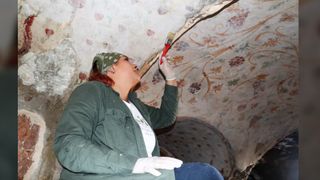The Kapilikaya Rock Tomb. Photo: Savas Bozkaya/Shutterstock
Deep in the mountains of Turkey’s Çorum province, an ancient tomb fades into obscurity. Its past is almost forgotten and its future looks bleak. Details of its construction and the occupant inside are unknown. For thousands of years, the Kapilikaya rock tomb has been both a hidden architectural marvel and an extraordinary puzzle.
Çorum province lies not far from the Black Sea, on the Central Anatolian Plateau near the North Anatolian Fault. Tectonic activity has created diverse rock formations, enhanced by folding and faulting.
According to sources, the word Kapilikaya means precisely what it is: a rock with a door. The Kapilikaya rock tomb dates to the 2nd century BC, during the so-called Hellenistic Period. Some Turks believe that the tomb is Roman, not Greek. Modern Turks and Greeks often don’t get along.
Unknown builders carved the tomb into an outcrop. A trail on the left side leads up to a set of stairs at the base. Unfortunately, the base of this doorway is a canvas for graffiti artists.
From the outside, the tomb’s entrance looks like a massive doorway. In fact, the door doesn’t open, it never did, and there isn’t much space inside. Rather than the giant grotto suggested by the imposing size of this faux-door, it is simply a small crypt with little room for anything except a body. READ MORE...


